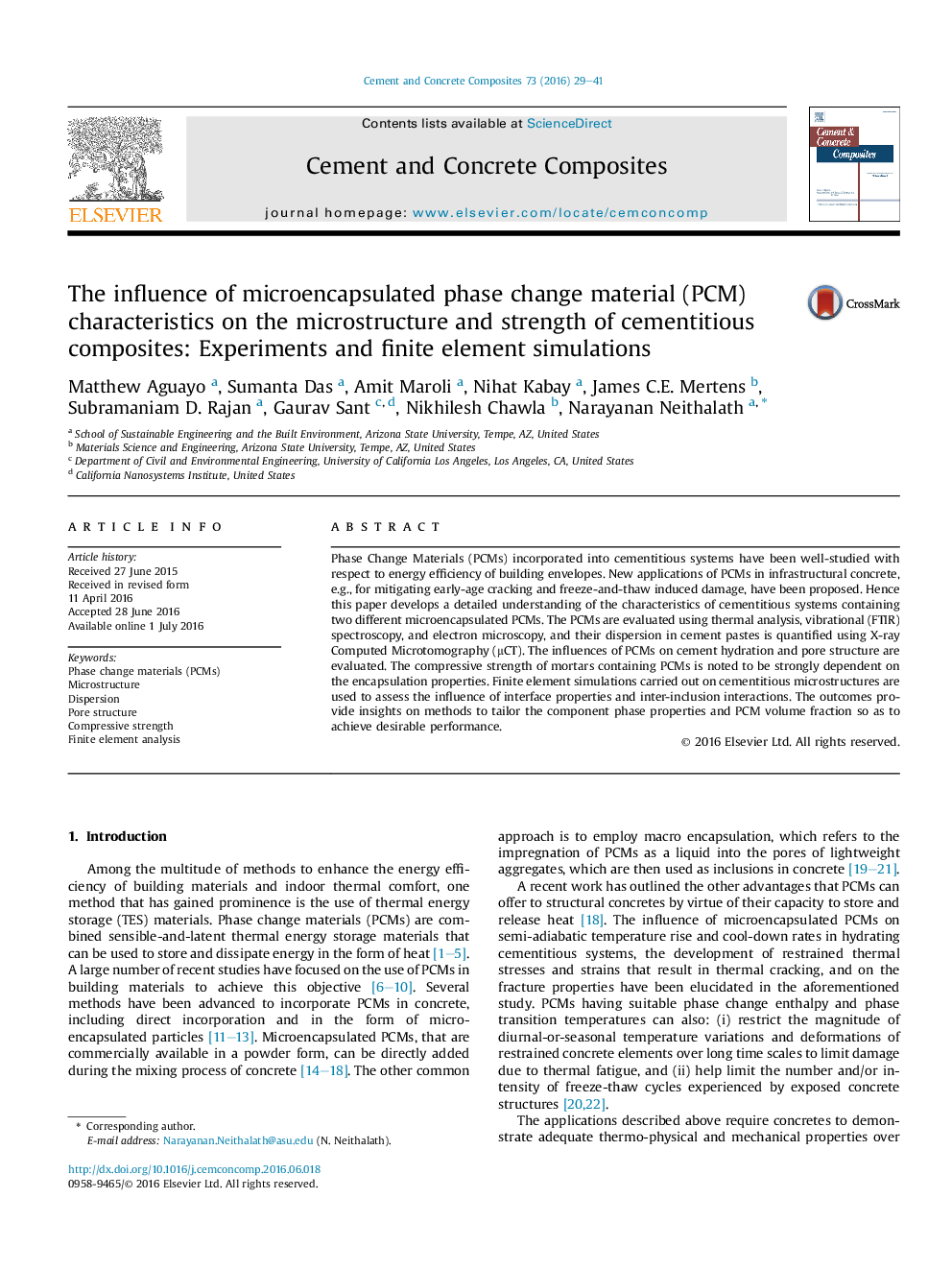| Article ID | Journal | Published Year | Pages | File Type |
|---|---|---|---|---|
| 1454255 | Cement and Concrete Composites | 2016 | 13 Pages |
Phase Change Materials (PCMs) incorporated into cementitious systems have been well-studied with respect to energy efficiency of building envelopes. New applications of PCMs in infrastructural concrete, e.g., for mitigating early-age cracking and freeze-and-thaw induced damage, have been proposed. Hence this paper develops a detailed understanding of the characteristics of cementitious systems containing two different microencapsulated PCMs. The PCMs are evaluated using thermal analysis, vibrational (FTIR) spectroscopy, and electron microscopy, and their dispersion in cement pastes is quantified using X-ray Computed Microtomography (μCT). The influences of PCMs on cement hydration and pore structure are evaluated. The compressive strength of mortars containing PCMs is noted to be strongly dependent on the encapsulation properties. Finite element simulations carried out on cementitious microstructures are used to assess the influence of interface properties and inter-inclusion interactions. The outcomes provide insights on methods to tailor the component phase properties and PCM volume fraction so as to achieve desirable performance.
